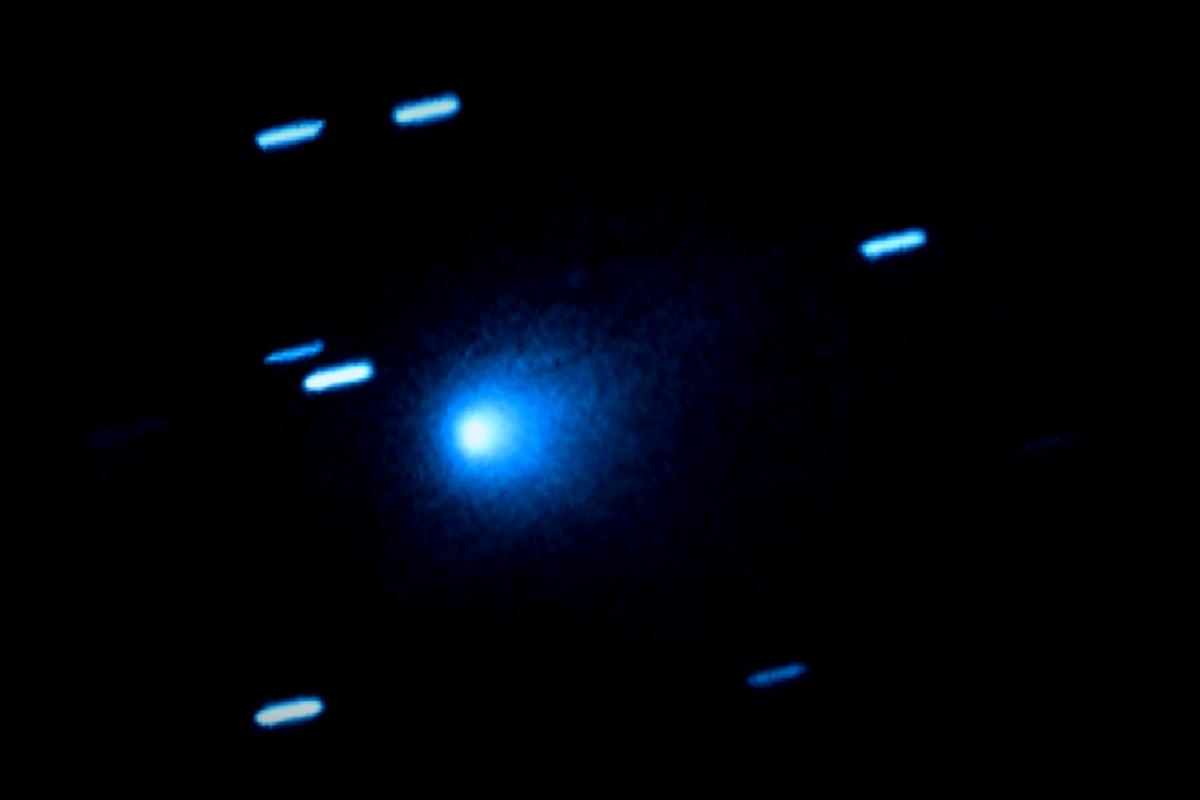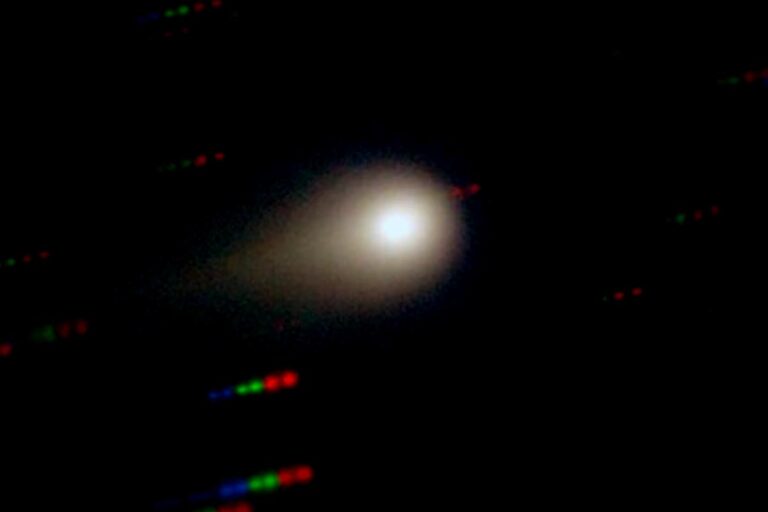What’s Up with 3I/ATLAS?
It all started with a report from Davide Farnoccia, a navigation engineer at NASA’s Jet Propulsion Laboratory, which gained attention thanks to Harvard physicist Avi Loeb’s article published on Medium on October 30, 2025.
3I/ATLAS, our interstellar traveler, has revealed noticeable signs of non-gravitational acceleration when it peeked closest to the Sun—called perihelion.
During this perihelion event, 3I/ATLAS was about 1.36 times the distance from Earth to the Sun, roughly 203 million kilometers away.
The acceleration was precisely documented, showing two components affecting its path:
“A radial acceleration of 135 kilometers per day squared, pushing it away from the Sun,” the report stated.
And for the second component:
“A transverse acceleration of 60 kilometers per day squared, relative to the Sun’s path.”
These findings presented a fascinating twist in the ongoing research surrounding the comet, opening the door to new theories about what could be causing such behavior.
Possible Causes: What’s Behind the Acceleration?
Loeb provides some intriguing possibilities in his article. Firstly, there’s the chance that 3I/ATLAS is losing mass due to gas being expelled—think of it like a rocket with fuel burning out. If that’s true, this interstellar object could shed about half its mass over some time.
“With a thermal ejection speed of a few hundred meters per second, 3I/ATLAS could lose half its mass in about six months,” read one of the lines.
As it zips past perihelion, it could drop around 10% of its total mass, creating a noticeable plume of gas surrounding it that scientists like ESA’s Juie spacecraft are gearing up to observe in early November 2025.
Then, in the following month, it’s expected to be closest to Earth, about 269 million kilometers away. During this time, ground telescopes, including the Hubble and Webb, should pick up more clues on whether 3I/ATLAS’s mass loss comes from the sublimation of volatile ices as it gets heated by the Sun.
This mass evaporation may also explain why the comet brightened unexpectedly during observations made using STEREO, SOHO, and GOES-19 instruments.
On another note, there’s some speculation this non-gravitational acceleration might signal a different reality—a technological fingerprint pointing to an internal propulsion system. If that’s the case, it complicates everything since this brings a notion of artificial objects being somewhere else, especially since 3I/ATLAS has become unexpectedly bluer than the Sun.
“It might come down to emissions from a hot engine or some artificial lighting source, but it could also just mean ionized carbon monoxide for such a cosmic rock,” cautioned Loeb.
As a parting thought, Loeb wrapped up his piece with an insightful piece of advice directed toward budding theorists:
“It doesn’t help astrophysicists to disregard data just because it doesn’t fit pre-existing theories,” he noted.
As the scientific community digs deeper into the mysteries of 3I/ATLAS, let’s keep an eye on these updates!



















